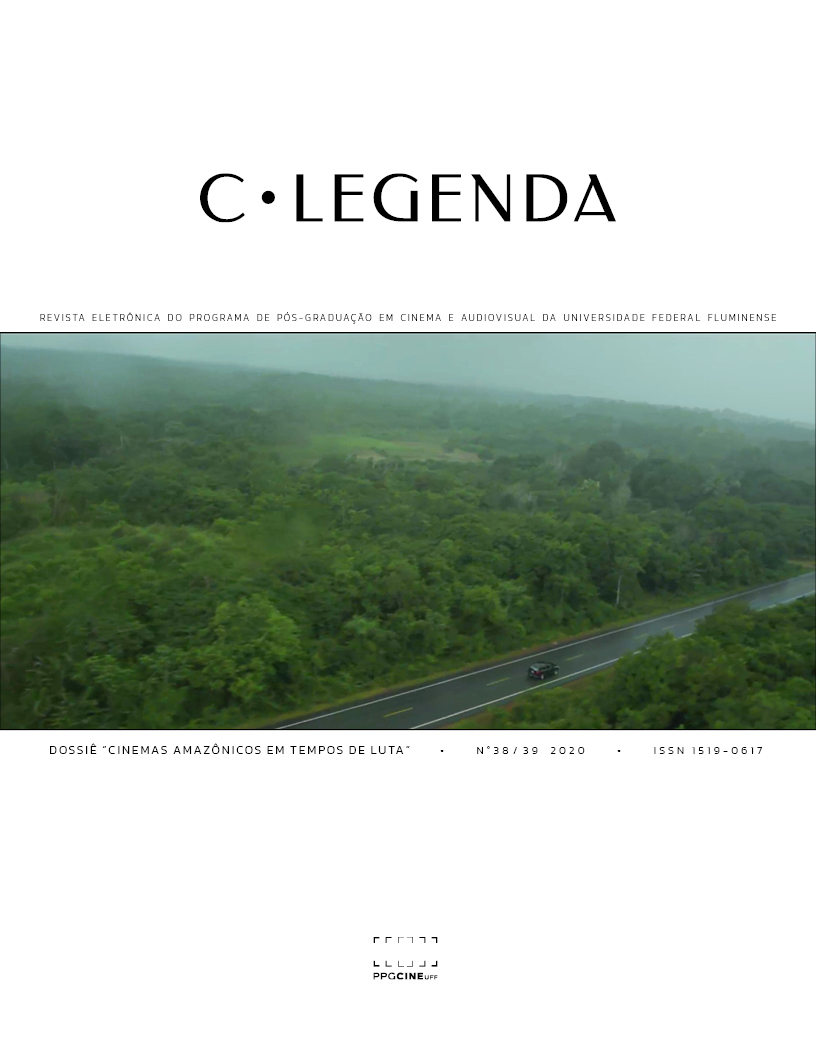A estética de absorção no cinema contemporâneo
Mots-clés :
estilo absortivo, lentidão, Wang Bing, Chantal Akerman, cinema brasileiro contemporâneoRésumé
O artigo aborda uma das vertentes estilísticas mais determinantes do cinema contemporâneo, a que chamaremos cinema de absorção. Tal tendência, cujo momento mais prolífico se deu entre meados dos anos 1990 e primeira metade dos anos 2010, compreende filmes de duração lenta, sem curva dramática expressiva, que representam personagens absortas em pequenas ações do cotidiano ou em situação de autoabandono, entregues à pura passagem do tempo. O conceito estético de absorção mobilizado pelo artigo tem origem no célebre estudo de Michael Fried sobre as relações entre pintura e observador no século XVIII. Levaremos em conta, portanto, as problematizações conceituais e históricas implicadas pela transposição desse modelo teórico de um campo disciplinar para outro. A análise do filme Pai e filhos (Fu yu zi, 2014), de Wang Bing, conduzirá uma primeira parte da investigação. Ao final, faremos considerações sobre a estética de absorção no contexto do cinema brasileiro contemporâneo e veremos como, nos últimos anos, o registro absortivo tem dado lugar a uma demanda por maior frontalidade e eloquência na representação.
Téléchargements
Références
AUMONT, Jacques. O olho interminável. São Paulo: Cosac & Naify, 2004.
BAXANDALL, Michael. Padrões de intenção. São Paulo: Companhia das Letras, 2006.
BAZIN, André. O cinema: ensaios. São Paulo: Brasiliense, 1991.
CRARY, Jonathan. Técnicas do observador. Rio de Janeiro: Contraponto, 2012.
FLANAGAN, Matthew. Slow cinema: temporality and style in contemporary art and experimental film. Tese de doutorado – University of Exeter, Inglaterra, 2012.
FRIED, Michael. Absorption and theatricality: painting and beholder in the age of Diderot. Berkeley: University of California Press, 1980.
JAFFE, Ira. Slow movies: countering the cinema of action. Nova York: Wallflower, 2014.
MARGULIES, Ivone. Nada acontece: o cotidiano hiper-realista de Chantal Akerman. São Paulo: Edusp, 2016.
MONASSA, Tatiana. “Da imersão, ou como a postura cinematográfica determina uma postura social”. In: CAETANO, Daniel (org.). Cinema brasileiro 1995-2005: ensaios sobre uma década. Rio de Janeiro: Azougue, 2005, p. 111-120.
NICHOLS, Bill. Introdução ao documentário. Campinas: Papirus, 2005.
OUDART, Jean-Pierre. “La suture”. Cahiers du cinéma, Paris, n. 211, abr. 1969, p. 36-39.
SMITH, Patrick Brian. “Working/Slow: Cinematic style as labour in Wang Bing’s Tie Xi Qu/West of the Tracks”. In: LUCA, Tiago de; JORGE, Nuno Barradas (orgs.). Slow cinema. Edinburgh: University Press, 2015.
Téléchargements
Publié
Numéro
Rubrique
Licence
Autores que publicam nesta revista concordam com os seguintes termos:- Autores mantém os direitos autorais e concedem à revista o direito de primeira publicação, com o trabalho simultaneamente licenciado sob a Creative Commons Atribuição-NãoComercial, CC BY-NC permitindo o compartilhamento do trabalho com reconhecimento da autoria do trabalho e publicação inicial nesta revista, sem que o material seja usado para fins comercias.
- Autores têm autorização para assumir contratos adicionais separadamente, para distribuição não-exclusiva da versão do trabalho publicada nesta revista (ex.: publicar em repositório institucional ou como capítulo de livro), com reconhecimento de autoria e publicação inicial nesta revista.
- Autores têm permissão e são estimulados a publicar e distribuir seu trabalho online (ex.: em repositórios institucionais ou na sua página pessoal) a qualquer ponto antes ou durante o processo editorial, já que isso pode gerar alterações produtivas, bem como aumentar o impacto e a citação do trabalho publicado (Veja O Efeito do Acesso Livre).


